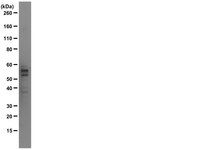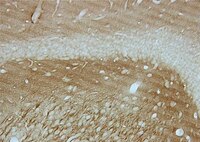MAB2241 Sigma-AldrichAnti-Tau Antibody, clone Tau 12
Anti-Tau Antibody, clone Tau 12 is an antibody against Tau for use in WB.
More>> Anti-Tau Antibody, clone Tau 12 is an antibody against Tau for use in WB. Less<<Recommended Products
Overview
| Replacement Information |
|---|
Key Specifications Table
| Species Reactivity | Key Applications | Host | Format | Antibody Type |
|---|---|---|---|---|
| H | WB | M | Purified | Monoclonal Antibody |
| References |
|---|
| Product Information | |
|---|---|
| Format | Purified |
| Control |
|
| Presentation | Purified in 0.1M Tris-Glycine (pH7.4) 150mM NaCl with 0.05% NaN3. |
| Quality Level | MQ100 |
| Applications | |
|---|---|
| Application | Anti-Tau Antibody, clone Tau 12 is an antibody against Tau for use in WB. |
| Key Applications |
|
| Physicochemical Information |
|---|
| Dimensions |
|---|
| Materials Information |
|---|
| Toxicological Information |
|---|
| Safety Information according to GHS |
|---|
| Safety Information |
|---|
| Storage and Shipping Information | |
|---|---|
| Storage Conditions | Stable for 1 year at 2-8ºC from date of receipt. |
| Packaging Information | |
|---|---|
| Material Size | 100 µg |
| Transport Information |
|---|
| Supplemental Information |
|---|
| Specifications |
|---|
| Global Trade Item Number | |
|---|---|
| Catalog Number | GTIN |
| MAB2241 | 04053252726934 |
Documentation
Anti-Tau Antibody, clone Tau 12 SDS
| Title |
|---|
Anti-Tau Antibody, clone Tau 12 Certificates of Analysis
| Title | Lot Number |
|---|---|
| Anti-Tau, clone Tau 12 - 2117157 | 2117157 |
| Anti-Tau, clone Tau 12 - 2356098 | 2356098 |
| Anti-Tau, clone Tau 12 - 2430378 | 2430378 |
| Anti-Tau, clone Tau 12 - 2002741 | 2002741 |
| Anti-Tau, clone Tau 12 - 2036116 | 2036116 |
| Anti-Tau, clone Tau 12 - 2091761 | 2091761 |
| Anti-Tau, clone Tau 12 - 2154093 | 2154093 |
| Anti-Tau, clone Tau 12 - 2272151 | 2272151 |
| Anti-Tau, clone Tau 12 - 2488840 | 2488840 |
| Anti-Tau, clone Tau 12 - 3170826 | 3170826 |















